FAQS






Frequently Asked Questions...
Why study Gila Monsters?
Gila Monsters (Heloderma suspectum) are quite common in the Sonoran Desert, but rarely encountered. This is because they spend up to 98% of their lives underground and emerge only at certain times of the year. Because of their elusive nature, it is difficult to determine population densities, differences in morphology, behavior and movement throughout the park.
The University of Arizona has therefore teamed up with Friends of Saguaro National Park to help the park better understand the ecology of this elusive animal. With the information from this study we will provide a baseline for future studies and aid in the conservation of the charismatic Gila Monster.
Are Gila Monsters venomous?
Yes! Gila Monsters are one of only two venomous lizards in the world. The other is the Beaded Lizard (Heloderma horridum) which is found in Mexico. Gila Monsters do not bite unless handled or harassed. When they do bite, they will not let go and they begin chewing to release venom into their victim’s wound. The venom is released from glands in the lower jaw and travels up grooves on the outside of the teeth. The venom is extremely painful, but rarely fatal. If bitten you should try to pry the animal off then contact the Poison Control Center immediately at 1-800-222-1222.
Gila Monsters are slow moving, right?
Well this depends on whether the animal feels threatened. Gila Monsters can move extremely fast when threatened and swing their entire body around to strike at and attacker. When a Gila Monster is on the move and unthreatened they tend to have a slow but steady pace.
What do Gila Monsters eat?
They eat baby rodents, baby rabbits/hares, bird eggs, lizards, reptile eggs and baby birds. They use their claws efficiently to dig out the burrows and nests of most of these animals.
How old can Gila Monsters get?
Gila Monsters can live more than 20 years. Some in captivity have lived up to 30 or more years.
When is a good time to look for Gila Monsters in the wild?
Gila Monsters are generally dormant during the winter and emerge around March from their burrows. From April to May they are often active during the day. During the summer monsoons, they can often be seen along the roads at night. In July and August they lay their eggs in a burrow - the young will emerge the next spring.
How big do Gila Monsters get?
They can grow to about 18 to 24 inches in length.
Do Gila Monsters store water in their tail?
No, but they do store fat in their tails. When this fat is metabolized, it provides them with energy and water.
Why are Gila Monsters so brightly colored?
The first reason is to warn other animals (including humans) that it is venomous. Animals such as the Gila Monster, Coral Snake, or Monarch Butterfly, are aposematically colored to warn potential predators that they are attacking something venomous or poisonous. Other animals may be brightly colored, such as the Queen Butterfly or Sonoran Mountain Kingsnake, but are not actually dangerous (Batesian Mimicry).
The second reason Gila Monsters have a unique color pattern is to help camouflage themselves. When inside a burrow, their black snout keeps them well hidden and when outside the burrow under vegetation, they blend in with the dappled light.
Are Gila Monsters endangered?
No, but they are protected. You cannot kill, collect, buy or sell them in the state of Arizona.
Please enter Gila monster sighting information
and upload photos at:
Arizona Herp Count www.herpcount.org

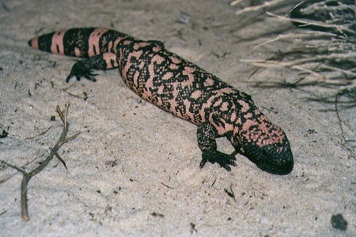

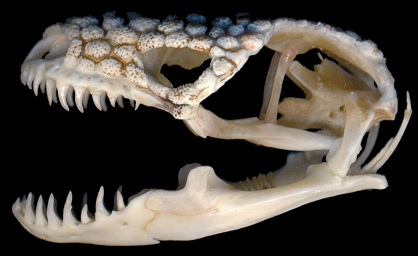
Husky 2010
Knight 2010
Medscape 2002
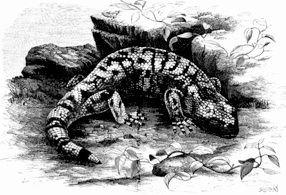
ChestofBooks.com 2009

nps.com 2007
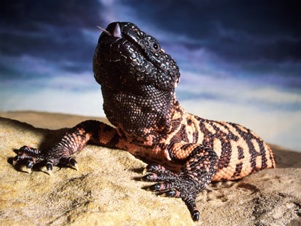
abcnews.com 2010
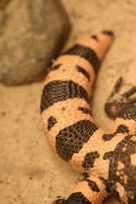
HerpitologyClass.com 2007
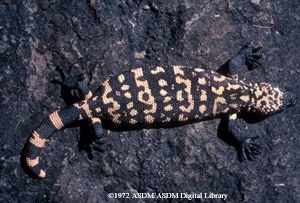
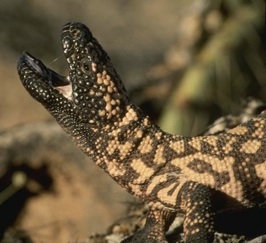
Yappi.com 2005


